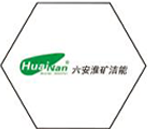
Nov . 27, 2024 07:44
Back to list
Understanding the Function and Importance of Safety Relief Valves in Industrial Applications
Understanding Safety Relief Valves Ensuring System Safety and Efficiency
Safety relief valves (SRVs) play a critical role in protecting industrial systems from overpressure situations. As essential components in various applications, such as oil and gas, chemical manufacturing, and power generation, they ensure that pressure levels remain within safe limits, thereby preventing potentially catastrophic failures and protecting both personnel and equipment.
What is a Safety Relief Valve?
A safety relief valve is a type of pressure relief valve designed to automatically release excess pressure from a system. When the pressure exceeds a predetermined limit, the valve opens to allow fluid or gas to escape, thus preventing damage to the system. The valve then closes once the pressure returns to safe levels. Safety relief valves are typically found in boilers, pressure vessels, and piping systems, making them indispensable in industries that operate under high pressure.
How Do Safety Relief Valves Work?
The operation of safety relief valves is based on a simple yet effective principle of balance. The valve consists of a spring-loaded mechanism that keeps the valve closed under normal operating conditions. The spring exerts a force that holds the valve disc against the seat, maintaining the seal.
Once the pressure reaches the setpoint, the force exerted by the fluid or gas against the valve disc overcomes the spring force, causing the valve to open. The escaping fluid or gas reduces the pressure within the system. When the pressure drops back to a safe level, the spring force re-seats the valve disc, closing the valve and restoring normal operation.
Types of Safety Relief Valves
There are several types of safety relief valves 1. Spring-Loaded Relief Valves The most common type, relying on a spring to maintain the closed position until the set pressure is reached. 2. Pilot-Operated Relief Valves Use a small pilot valve that controls a larger main valve. They are suitable for high flow applications and provide a tight seal. 3. Bellows Relief Valves Use bellows instead of springs to respond to pressure changes, offering enhanced performance in certain applications.
The Importance of Safety Relief Valves
safety relief valve

1. Protection Against Overpressure The primary function of safety relief valves is to prevent overpressure, which can lead to equipment failure, leaks, explosions, or fires. By safely venting excess pressure, SRVs help maintain system integrity. 2. Compliance with Regulations Industries that operate high-pressure systems are subject to strict regulations. Safety relief valves are essential for compliance with these regulations, helping organizations avoid costly fines and legal issues.
3. Operational Efficiency By regulating pressure, safety relief valves ensure that systems operate within their design parameters. This not only enhances system performance but also extends the lifespan of equipment.
4. Safety Assurance The presence of properly functioning safety relief valves significantly reduces the risk of accidents, protecting workers and the environment. A well-maintained SRV can save lives and prevent hazardous situations.
Maintenance and Testing
Regular maintenance and testing of safety relief valves are crucial for their effective operation. Industry standards typically recommend periodic inspections to ensure the valves are functioning correctly. This may include
- Visual Inspections Checking for signs of wear, corrosion, or mechanical damage. - Pressure Testing Testing the valve against its setpoint to ensure it opens and closes at the specified pressures. - Cleaning and Lubrication Maintaining the valve’s internal components to ensure smooth operation.
Neglecting maintenance can lead to valve failure, which might result in severe safety risks and operational downtime.
Conclusion
Safety relief valves are a fundamental component of pressure management in various industries. Understanding their function, types, and importance enables organizations to maintain safer, more efficient operations. By ensuring the proper selection, maintenance, and testing of safety relief valves, companies can mitigate risks associated with overpressure, protect their assets, and safeguard their personnel. In a world where industrial processes are critical and often complex, the role of safety relief valves cannot be overstated; they are, quite simply, a vital line of defense in managing system safety.
Latest news
-
Safety Valve Spring-Loaded Design Overpressure ProtectionNewsJul.25,2025
-
Precision Voltage Regulator AC5 Accuracy Grade PerformanceNewsJul.25,2025
-
Natural Gas Pressure Regulating Skid Industrial Pipeline ApplicationsNewsJul.25,2025
-
Natural Gas Filter Stainless Steel Mesh Element DesignNewsJul.25,2025
-
Gas Pressure Regulator Valve Direct-Acting Spring-Loaded DesignNewsJul.25,2025
-
Decompression Equipment Multi-Stage Heat Exchange System DesignNewsJul.25,2025

